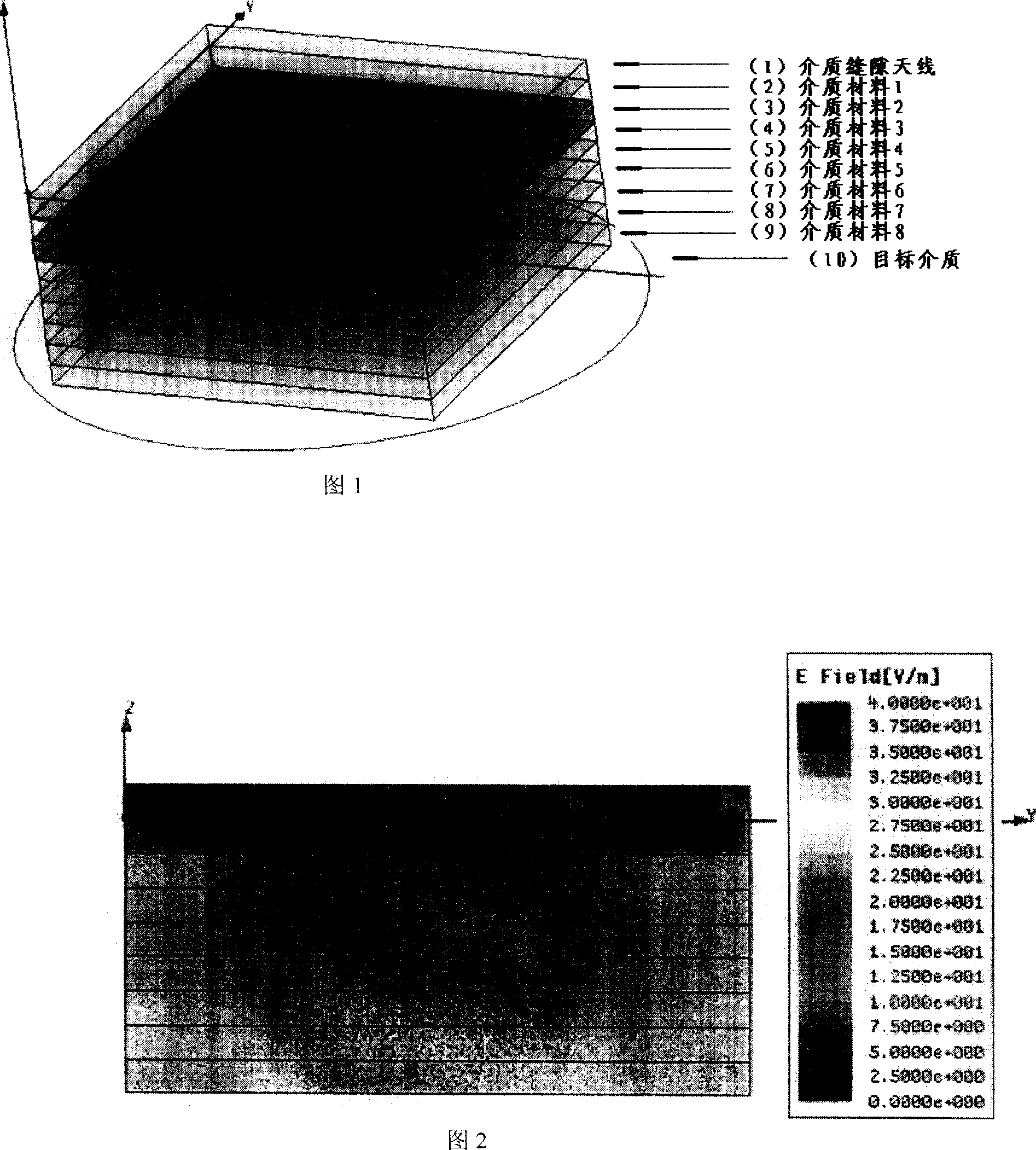A directly radiated media lens and its application in the micro-wave near field detection
A dielectric lens, microwave detection technology, applied in electromagnetic field characteristics, antennas, electrical components and other directions, can solve problems such as small delay, short signal propagation time, and undetectable
- Summary
- Abstract
- Description
- Claims
- Application Information
AI Technical Summary
Problems solved by technology
Method used
Image
Examples
Embodiment Construction
[0021] As shown in the figure, the direct-radiation dielectric lens and its application technology in microwave detection, the direct-radiation dielectric lens is composed of several dielectric sheets 1 with equidifferential transformation of the dielectric constant between the antenna and the detection target ...n overlapping composition.
[0022] Its application method is: place two dielectric lenses C and C′ with opposite structures between the antenna radiation surface A and the detection target medium B, and each dielectric lens consists of n pieces of dielectric sheets C with equal differential changes in permittivity 1 -C n and C' 1 -C' n composition.
[0023] From the technical scheme given in accompanying drawing 1: 2 dielectric lenses with opposite structures are placed between the antenna radiation surface (assuming that the dielectric constant is 50) and the detection target medium (assuming that the dielectric constant is 36), and each dielectric lens is compos...
PUM
 Login to View More
Login to View More Abstract
Description
Claims
Application Information
 Login to View More
Login to View More - R&D
- Intellectual Property
- Life Sciences
- Materials
- Tech Scout
- Unparalleled Data Quality
- Higher Quality Content
- 60% Fewer Hallucinations
Browse by: Latest US Patents, China's latest patents, Technical Efficacy Thesaurus, Application Domain, Technology Topic, Popular Technical Reports.
© 2025 PatSnap. All rights reserved.Legal|Privacy policy|Modern Slavery Act Transparency Statement|Sitemap|About US| Contact US: help@patsnap.com



